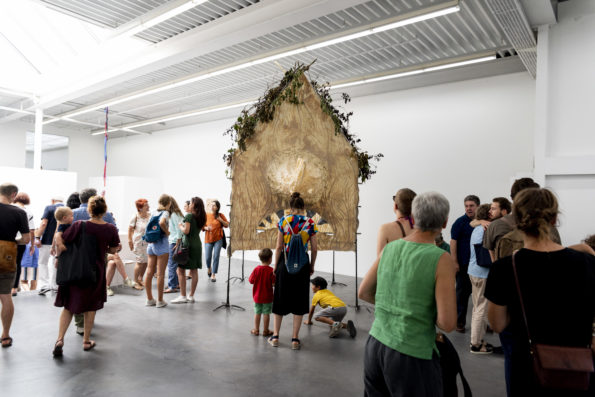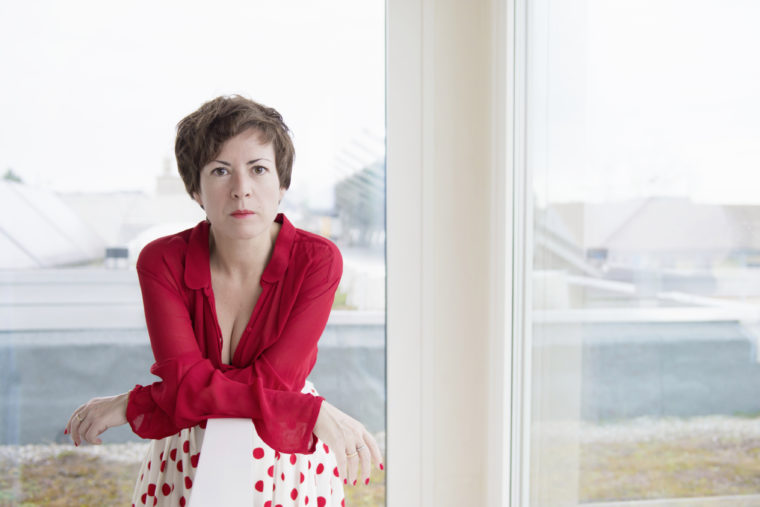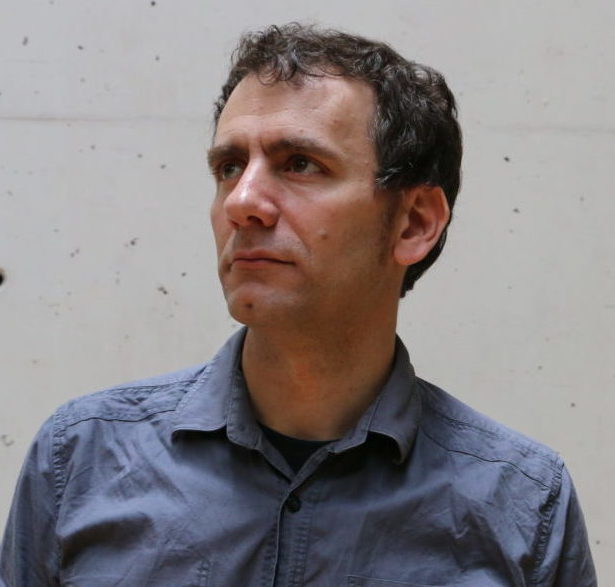Search
To search for an exact match, type the word or phrase you want in quotation marks.
A*DESK has been offering since 2002 contents about criticism and contemporary art. A*DESK has become consolidated thanks to all those who have believed in the project, all those who have followed us, debating, participating and collaborating. Many people have collaborated with A*DESK, and continue to do so. Their efforts, knowledge and belief in the project are what make it grow internationally. At A*DESK we have also generated work for over one hundred professionals in culture, from small collaborations with reviews and classes, to more prolonged and intense collaborations.
At A*DESK we believe in the need for free and universal access to culture and knowledge. We want to carry on being independent, remaining open to more ideas and opinions. If you believe in A*DESK, we need your backing to be able to continue. You can now participate in the project by supporting it. You can choose how much you want to contribute to the project.
You can decide how much you want to bring to the project.

Chus Martínez is the director of Institute of Art in FHNW Academy of Arts and Design in Basel. She has been the artistic director of Sala Rekalde (Bilbao), director of Frankfurter Kunstverein, chief curator in MACBA (Barcelona) and Museo del Barrio (New York). She was also head of department and member of Core Agent Group of dOCUMENTA(13) in Kassel.
MM: You’re directing the Institute of Art in FHNW Academy of Arts and Design in Basel. At the same time, you combine your work with other institutional positions, looser ones, such as your link to TBA21 in its most experimental strand in relation to learning. How do you combine those jobs? Are they all related?
CM: To connect everything is important to me, to let students know everything I do. But also granting everyone I work with the possibility of interpreting how different activities are linked. I always thought that the redefinition of the curriculum of the Institute, in cooperation with all the team should correspond with my perspective as a curator: nature, gender and ethnicity. Any decision, like collaborating with TBA21 Academy, also has to be included in that speculative scenario, in which, what matters the most are the values that connect artistic production with respect for life, with the values of nature and with the horizon of a world in equality. Everyone who works with me knows that the Institute is not something that can be separated from any other aspect. My ideal of life is the interlacement of ideas and of those who make them possible. To socialise everything has always been a goal for me. I come from a small town.

Chus Martínez. Photo: Nici Jost
MM: If we look back over the last few years, we can see the impact that the direct connection between the degree exhibitions in London and the figure of Saatchi had. Students waiting for the collector that could change their lives. And well, (YBA) Young British Artists has quite a lot of this leap between educational context and an institutionalised market of art.
CM: It’s true, the world was like that for a while. I never had anything to do with it, and of course, the world that’s coming will be very different from that structure in which collectors had that influence, they will have a different one. That world was very reliant on past structures, on ways of understanding property and capital, those ways are severely endangered, not just for the current situation, but long before. We have the end of that ancient regime ahead of us, the end of that way of coding and stratifying the influence and social influx groups. We can easily imagine that in a near future, art and artists will experience an unprecedented pairing with technology, but also other ways of social interaction, a new political art, if you want to call it that.
MM: I’m interested in what you’re saying about other ways of social interaction perceived as something political from art. We talk about the work of artists, but we can also do so when it comes to structures. Structures that need to be rethought, probably in order to formulate new ideas about how to understand the world. In the educational context, the importance of constant learning is pretty clear. Maybe that’s something that’s been lost in other institutional formats because learning was seen as synonymous with showing weakness.
CM: Yes, I believe that notions such as innovation and pressure on institutions in relation to the number of visitors (and budgets) have relativised their capacity of real learning. For example: we now talk about digital formats, but the standardisation of platforms is such, that what is being offered is very similar. It’s quite hard to break away from the established ways. Same thing happens with collaborations, to collaborate is difficult and burdensome. Everything must have a goal, and the justification thereof involves collaborations that are ultimately not. There are infinite examples of how spontaneous ways —at the base of learning— are at risk of permanent extinction.
MM: For two years I was the curator of the degree exhibitions in Konstfack, one of the art universities in Stockholm. Suddenly, you’re the curator of something with 180 artists that need dialogue and support for the production of new work. In terms of size it’s much larger than most biennials in the world, and the team that’s required for everything to go as planned is clearly big. The media coverage is also important and the public is going to look for surprise. How do you define that in Basel?
CM: Since I got there almost six years ago, I decided to present the degree show as I would do with an important biennial. Firstly, I formed a production team and dedicated a whole year on meeting regularly with the two artist families that composed the exhibiton, the third year of bachelor and the second year of master. My second step was to look for my partner in all this: Ines Goldbach; Carolyn Christov-Bakrgiev; Filipa Ramos; Sofia Hernandez, Nikola Dietrich… Next up was to design a strategy to interpret the works and to communicate it to the artists so that every participant could understand the entirety in some way. It’s a whole year of intense work that opens up to the city in one day in the Kunsthaus Baselland. Initially, nobody took it very seriously. These “student” expositions didn’t seem relevant to what could happen to them later on in life as individuals, something more interesting for the market. But slowly, the appointment has become a way of understanding relevance and importance of the youngest generations, their interests, which are their references, and which are the horizons they build, and how those horizons complement others that previous generations defined. It is very exciting to me to see how the exhibition is now important for the city, even very important emotionally speaking.
MM: I remember the moments in which I saw who were the people there with you at the degree show: I read the selected names almost as a statement; you have people who work at top level of international art in direct contact with students, and working for their exposition. There’s a change in the rules of the game.
CM: The logic is simple, the graduation exhibition is, without a doubt, one of the most important expositions for these young artists. On one hand, it represents their first contact with institutions and their first professional dialogue with curators and writers about their production process. On the other hand, that exposition is also crucial for me. I work on it for a whole year, with the invited curator, so pretending it isn’t as important to me as other expositions are, would wield a negative prejudice on my own work. The city’s response, though, has adapted to that rigour, to the work and to the proposal of content and values we offer. It is almost an essential appointment in which no one dares asking for a price like they would in any institutional exposition, but in which many invitations for the artists to keep working are made.
MM: In the institutional ecosystem of art, we have seen how schools became more than just schools. Many of the educational centres have more technical material than most art centres (video projectors, production capacity, exhibition spaces…), and they can even have a flexible guest program. There’s also something interesting in relation to the emotional position of the students and their desire for discovery and experimentation. Are we facing a structural change?
CM: I hope so, schools are ecosystems that produce, talk, think and build bridges to collaboration. They truly are places of reflection, not storage rooms or second tier institutions when compared with the alleged top tier ones. There are no top and second tiers, only coexistence and possibility.
MM: In some way, it’s almost as if institutional contexts were multiplied when a significant amount of schools that are places of future definition are added to this map. I think it’s also important to insist in the desire of investigation and experimentation, as well as the feeling of latent possibility that something important and imprecise can happen anytime. And right now, we are facing an uncertainty regarding what’s going to happen after the virus, and how everything is going to stagger.
CM: I’m not an optimist, but places such as the Institute let us think in the new relations that will be establish between the citizens and both art and artists. It is a flexible and generous place that’s able to join many others. That impulse, the impulse to join, is now essential. Who better than those who take the initiative to start up that artistic, social and pedagogic dynamic?
(Featured Image: Opening I-Hood, Graduation Exhibition Art Institute HGK FHNW, Basel, Kunsthaus Baselland, 2019, photo: Christoph Bühler)

Director of Index Foundation, Stockholm, exhibition curator and art critic. Yes, after Judith Butler it is possible to be several things at once. He thinks that questions are important and that, sometimes, to ask means to point out.
"A desk is a dangerous place from which to watch the world" (John Le Carré)